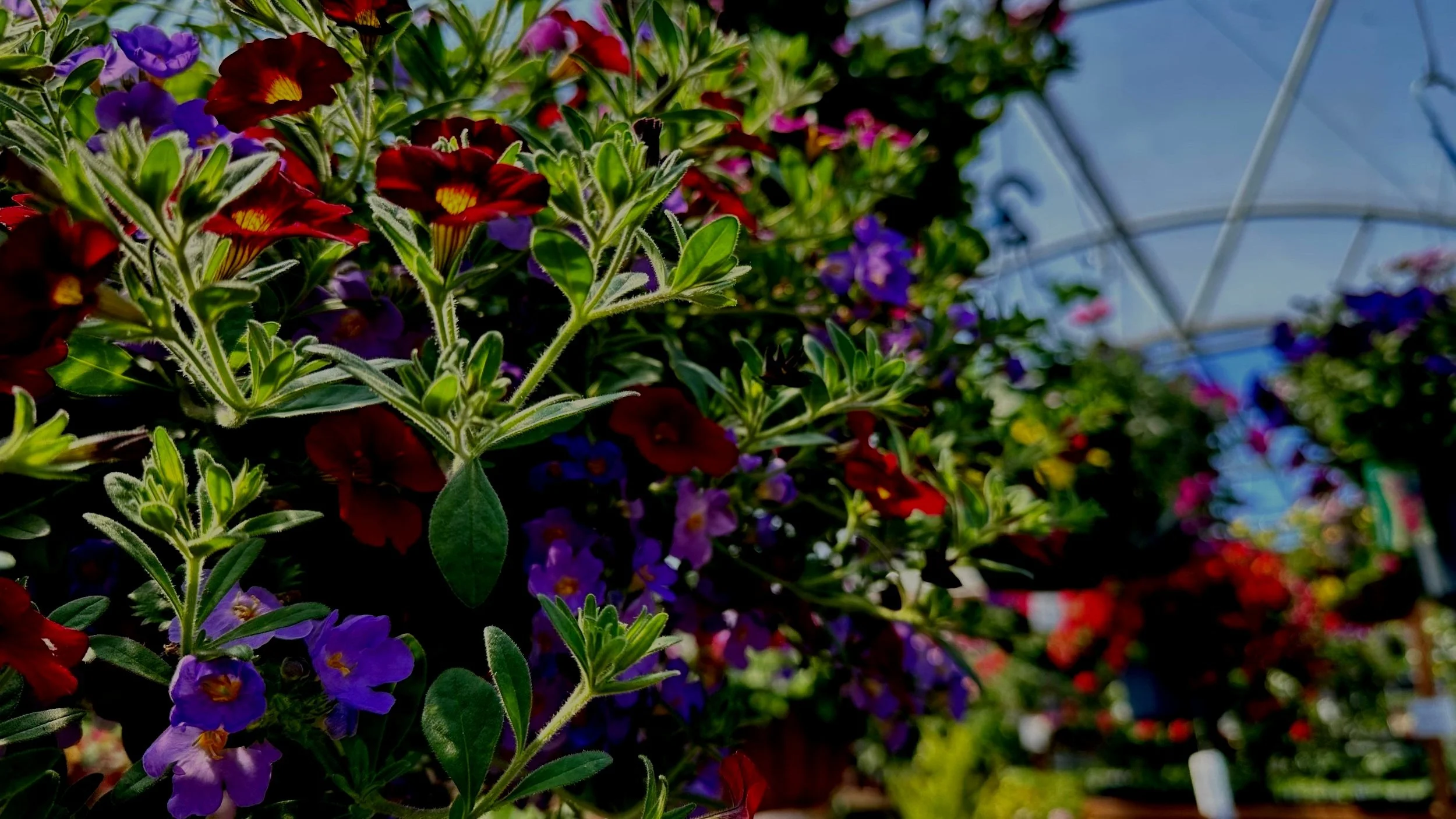May is high season in the garden center, when all levels of gardeners venture out for their annual spring ritual of adding some color to their yards. For some it may only be a hanging basket, that may shrivel up and die in a month or so from general neglect (what do you mean you have to water and feed those darn things?). For others it might involve many planters on the porch and patio, and for still others, it could mean planting tons of seasonal color in the landscape. Whatever level of gardener we might happen to be, I think it is safe to say that we all get the same rush of endorphins whenever we interject colorful plants into our gardens. It is a feel-good kind of activity. So, if the effect of all this color is so pleasant, why are there so many just plain boringly monochromatic yards, where the homeowners do absolutely nothing to living things up? It is so unnecessary!
While the month of May is when gardeners typically focus on annuals, let’s not forget that there are many other sources of color for our gardens that are hardy and become permanent elements in our landscapes. For a couple of months now we have been experiencing the colorful blooms of Flowering Cherry trees, purple-leaf plum trees, Magnolias with their large cup and saucer blooms, bright yellow flowers of Forsythia and Witch Hazel, reddish-coral Quince, many varieties of Flowering Crabapple trees, and a whole color range of Rhododendrons and Azaleas. There is no shortage of trees and shrubs that can provide us with color in our gardens almost anytime of the year. And yet, I see so many yards that are landscaped with nothing more than green grass, a few Conifers and evergreen Boxwoods, and maybe a red-leafed weeping Japanese Maple. BORING!
To be fair, the above yards, while not very visually exciting, look nice year around and are generally easy to care for. Some might even suggest that they are classic or refined. I once had a neighbor whose yard was all green with the exception of white roses. It was peaceful, maybe even soothing, but for me, uninspiring to look at from across the street and I was quite happy when they moved out and the new homeowner started jazzing things up.
In addition to the above trees and shrubs, there is an endless list of perennials (yes, these are the ones that hopefully come back every year) that provide color in different times of the year. Winter bloomers, like Primroses and Hellebores, are followed by Candy Tuft, Aubretia, Creeping Phlox, and Arabis. Blue-flowering Ajuga is just coming on in my garden, as are some tangerine-colored Geums. The choices just increase exponentially once we move into summer and even fall.
And let’s not forget the value of colorful foliage. Barberries come in a range of red to orange to yellows, as do Spiraeas. Our native Ninebark also comes in several shades, from gold to dark purple, - my favorite is ‘Amber Jubilee’, which is a lovely range of yellow, orange, and red, all on the same plant. These brightly colored shrubs are very effective in early spring at lighting up a landscape before a lot of plants come into bloom.
By all means, focus on the annuals in May, but don’t forget all of the other options for coloring up the garden the rest of the year. The more color we can incorporate into our landscapes, the more they will entertain us and keep those endorphins flowing, which is a very good thing.


